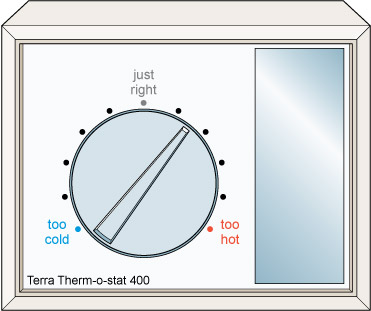1.5 Monitoring and control
Activity 1
Describe the behaviour of a central heating room thermostat in your own words.
Answer
A room thermostat controls the air temperature to be at a particular value. It monitors the temperature and is connected to the central heating system. If it senses the room temperature is too warm it turns the central heating down or off and vice versa.
The two key parts of the negative feedback loop of a thermostat are monitoring and control. In the same way, our setting of the Earth’s ‘thermostat’ (Figure 3) would require monitoring and control to:
- ensure geoengineering was achieving the desired climate
- adjust the level of geoengineering if circumstances changed (for example, if the Sun’s output or greenhouse gas forcings changed, or if there were unexpected negative impacts).
For monitoring, we would need to continue the efforts described in Session 1 to measure the effectiveness and any side-effects of our geoengineering: for example, changes in temperature, rainfall, glaciers, ice sheets, sea ice, snow, sea level rise, ecosystems and human health, as well as ocean pH changes and their effects on marine life. You will consider the difficulties of this monitoring and control later.

